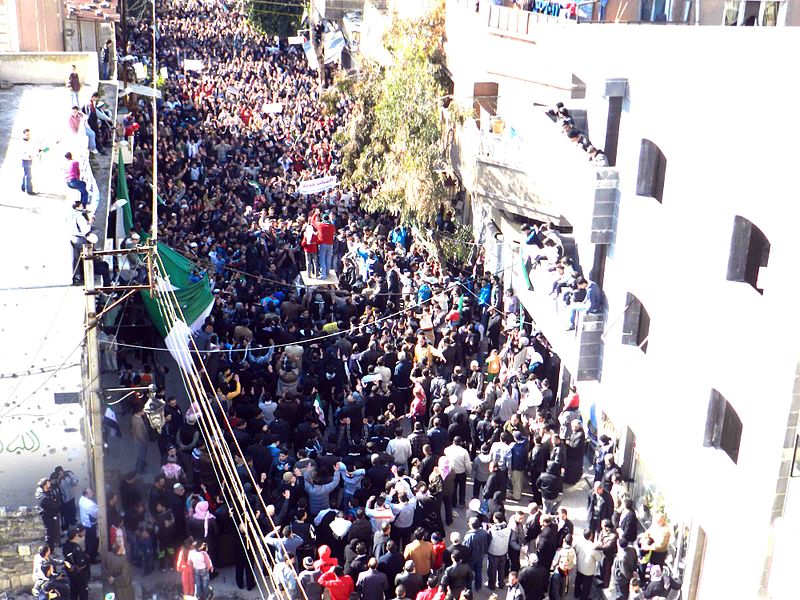
Lebanon as the Second Syrian Battlefield
While newspapers and policymakers are focused on the ongoing fighting and the suspended UN observer mission in Syria, a second equally dangerous situation is bubbling to the surface in neighboring Lebanon.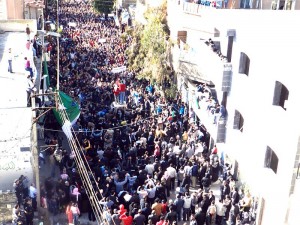
In our interconnected world, conflict does not stop at state borders and Syria is no exception, what happens in Syria reverberates in the multi-ethnic and fractious Lebanon. The two countries have long been joined at the hip, Syria invaded and occupied Lebanon for nearly 30 years until its withdrawal in 2005 following the assassination of former Sunni Prime Minister Rafik Hariri. During that time, Syria ran Lebanon as a virtual client state, vetting and approving political appointees as well as maintaining a large domestic intelligence and military presence in the country.
Now, as the rebellion in Syria continues into its 15th month, tensions in Lebanon are rising between the three main religious groups, Sunnis, Shiites, and Christians. These factions, already antagonistic with each other, have been engaged in running gun battles since mid-May when two Sunni clerics were killed at an army checkpoint.
 The past history of Lebanese sectarian conflict shows that it is like a flywheel, slow to start and gain speed but once started it is difficult to stop. As the rebellion in Syria continues, tensions in Lebanon will continue to intensify and there is a small but increasing chance that Syria might take Lebanon down with it.
The past history of Lebanese sectarian conflict shows that it is like a flywheel, slow to start and gain speed but once started it is difficult to stop. As the rebellion in Syria continues, tensions in Lebanon will continue to intensify and there is a small but increasing chance that Syria might take Lebanon down with it.
This should not come as a surprise to most Middle East observers. The stakes in this current conflict in Syria loom large; a victory for Assad would mean the continued survival and robustness of Hezbollah and persistent interference from Syria, while a victory for the rebellion would end Syrian interference in Lebanon’s internal affairs and empower Sunnis and their Christian allies in Lebanon.
Hezbollah
Syria represents Hezbollah’s supply line from Iran. Cut the supply line and it becomes more difficult for Hezbollah to resupply everything from rockets (particularly its Iranian made short range Fajr and Zelzal classes) to dairy cows. If this were to happen, Hezbollah would lose power and by extension political capital, which could force the creation of new political alliances or the creation of an alternate Shiite political party.
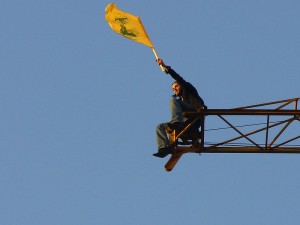 Historically, Hezbollah has enjoyed the support of both Sunnis and Shiites due to its position as the vanguard of Islamic resistance against Israel. But now the group is being viewed in increasingly sectarian terms. Hezbollah’s support of al-Assad is isolating it from Lebanon’s (and undoubtedly Syria’s) Sunni community. Many Lebanese Sunnis now longer feel that Hezbollah is fighting an external enemy, rather they see the group as an extension of Syria’s fight against their fellow Sunnis.
Historically, Hezbollah has enjoyed the support of both Sunnis and Shiites due to its position as the vanguard of Islamic resistance against Israel. But now the group is being viewed in increasingly sectarian terms. Hezbollah’s support of al-Assad is isolating it from Lebanon’s (and undoubtedly Syria’s) Sunni community. Many Lebanese Sunnis now longer feel that Hezbollah is fighting an external enemy, rather they see the group as an extension of Syria’s fight against their fellow Sunnis.
But Hezbollah seems to have recognized the danger in isolating its Sunni allies and has started to shift its language from whole-hearted support of the Syrian regime, to one supporting dialogue and a negotiated political settlement (albeit one that protects its interests). But for many Sunnis, the damage may have already been done.
Iran
The situation in Syria and Lebanon is not just a problem for Hezbollah, Iran is also in a precarious situation in the region. Losing its only ally Syria diminishes Iran’s power and influence in the Middle East. Iran uses Syria and Hezbollah as a line of defense against Israel, holding the keys to the group’s longer-range rockets as both an offensive and defensive force. Losing Syria would also take away Iran’s ability to respond against a future Israeli military strike against its nuclear facilities. Syria is Iran’s key to the Levant, without it Iran does not funnel supplies to Hezbollah or maintain an effective second strike capability against Israel.
Iran is attempting to establish better relations in Lebanon to buttress its position in the region in case the Syrian government falls to the rebellion. Iran has already sent a massive 105-person delegation to the Lebanese government, proposing a multitude of public works projects from road construction to power generation. And as the New York Times reported, many of the Iranian proposals were copies of previous agreements with Iraq, indicated by the failure of the Iranian delegation to replace the world “Baghdad” with Beirut in one draft document.
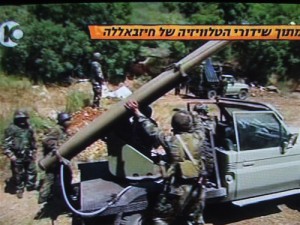 By establishing stronger ties with the country and people of Lebanon, Iran is trying to soften the potential impact of losing Syria. Iran is already a solid feature of southern Lebanon and other areas where there are large Shiite populations, but both half of Lebanon’s Christians and a majority of Sunnis are wary of the country and its connections to Hezbollah.
By establishing stronger ties with the country and people of Lebanon, Iran is trying to soften the potential impact of losing Syria. Iran is already a solid feature of southern Lebanon and other areas where there are large Shiite populations, but both half of Lebanon’s Christians and a majority of Sunnis are wary of the country and its connections to Hezbollah.
Increasing Iran’s difficulty in Lebanon is the fact that many Sunnis and their Christian allies view Iran as the enemy. Iran is one of the main international backers of Syria, providing them with arms and funds to battle the uprising, putting Iran on the side of al-Assad. Iranian attempts to integrate itself with the Sunnis are likely to fail and relations between the Sunni community in both Lebanon and Syria have been significantly damaged.
U.S Interests in the Current Conflict
For the United States, the situation in Syria and Lebanon revolves around Hezbollah and Iran. Therefore the goal of the United States should be to weaken Hezbollah and remove Syria as an Iranian ally. The United States should continue to work with our regional partners, Turkey, Saudi Arabia, and the Gulf States, to aid and guide the opposition.
Pressure should be continued to be applied to the Russian government to end their support of the Syrian government. Sanctions against the Syrian regime should also be increased to weaken the Syrian government and force Iran to spend more money to prop up the Syrian government. If possible, the CISADA Sanctions Act should be amended to apply to Syria as well as Iran.
Despite the recent massacres by the Syrian army, intervention is not advisable at this point. Intervention by supporting the rebels militarily would involved the United States in a difficult and complex conflict. Once the United States intervenes militarily, as Joshua Landis writes in Foreign Policy, it will own Syria. The US cannot just bomb and leave, there are too many geopolitical consequences to a anarchic and unstable Syria, and inevitably that instability will spill over to Lebanon.
A Lebanese Switzerland?
It is clear that in Lebanon the sectarian lines are beginning to clarify, pitting the Sunnis and their Christian allies against the Hezbollah-backed Shiites and their Christian allies. Fortunately, no one in Lebanon wants a replay of the civil war and the Lebanese government is so far doing a good job containing the violence.
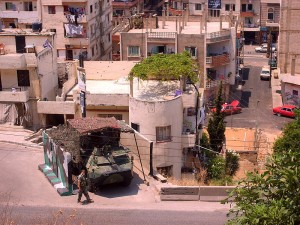 The Lebanese government and its most respected institution, the army, should attempt as much as possible to remain neutral in this fight. Lebanese Prime Minister Najib Mikati’s policy of “disassociation”, or formal neutrality in the Syrian conflict, has worked so far to contain the infighting in Lebanon. The government should also press the all factions to continue the National Dialogue process as a way to prevent tensions from increasing further and to resolve issues stemming from the Syrian conflict.
The Lebanese government and its most respected institution, the army, should attempt as much as possible to remain neutral in this fight. Lebanese Prime Minister Najib Mikati’s policy of “disassociation”, or formal neutrality in the Syrian conflict, has worked so far to contain the infighting in Lebanon. The government should also press the all factions to continue the National Dialogue process as a way to prevent tensions from increasing further and to resolve issues stemming from the Syrian conflict.
In the end, the best outcome for Lebanon is the quick resolution of the Syrian conflict. The faster the fighting stops the better. Lebanon is increasingly becoming a second battlefield, pitting Hezbollah and Iran against the Lebanese Sunni community. As the violence intensifies in Syria and Iran attempts to defend its position, the flywheel will continue to gain speed in Lebanon, bringing the country closer to widespread Sunni-Shiite conflict.






[…] Lebanon as the Second Syrian Battlefield – American Security Project […]